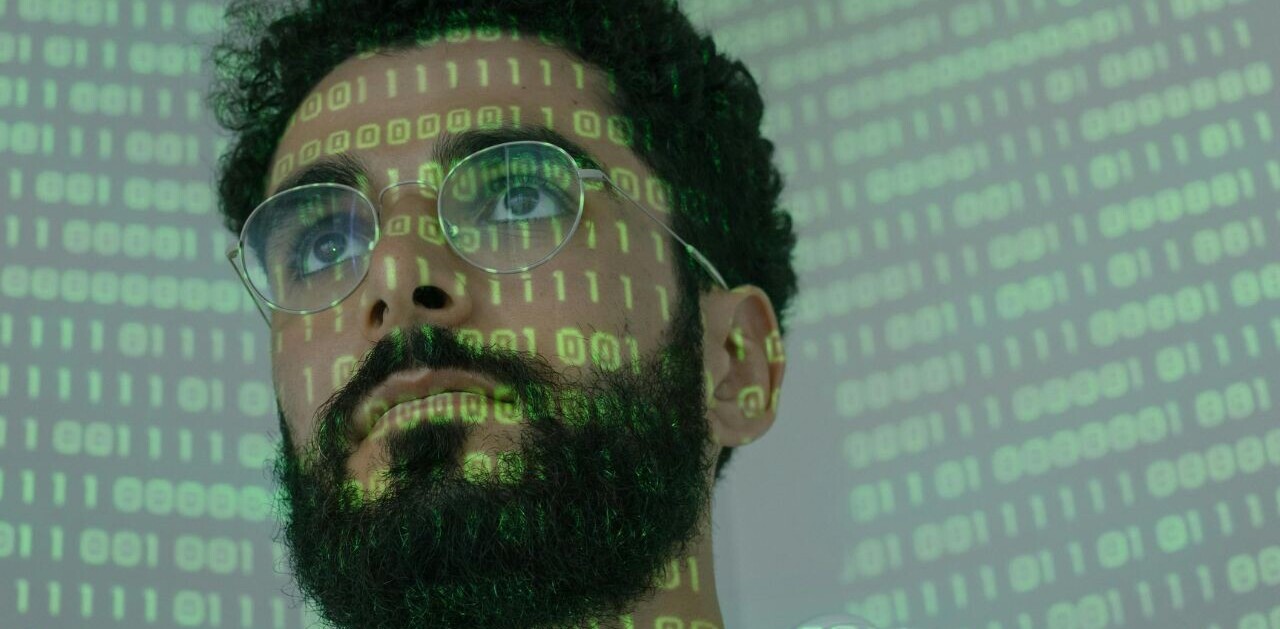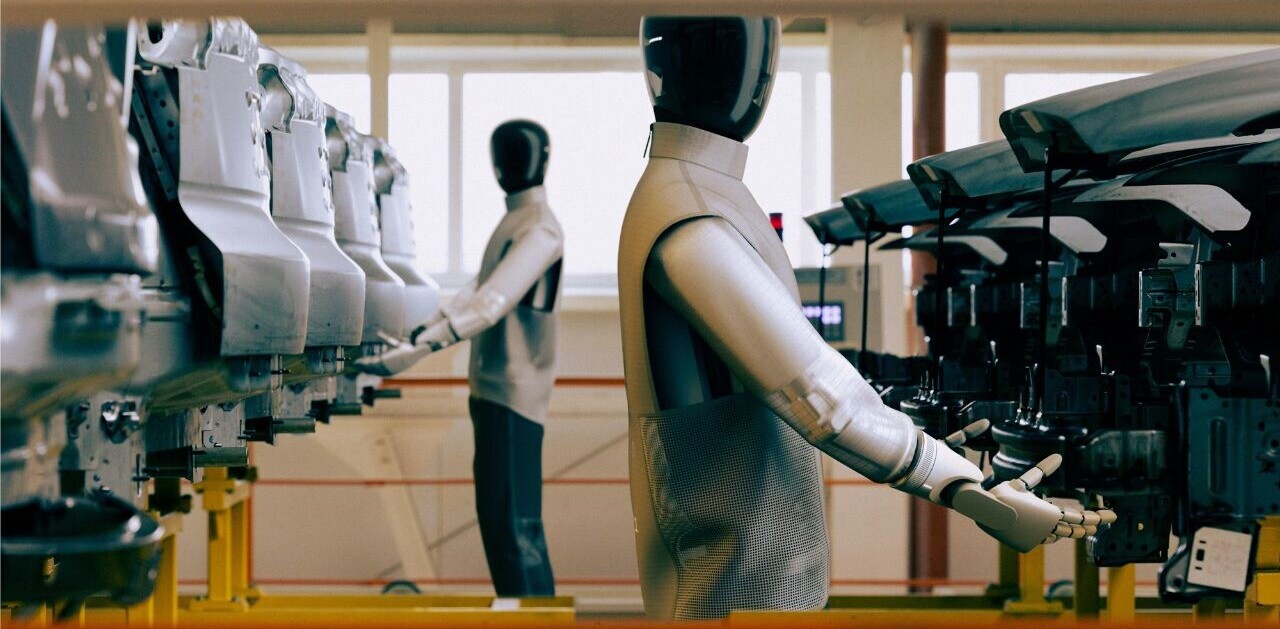This article was originally published on Built In by the Co-founders of Calamity AI
The script starts simply enough: A couple is at the end of dinner. Conversation winds down, the wine is almost finished. After a silence, the man says he wants to play a game.
Enter artificial intelligence.
Does AI dream of writing screenplays?
UsingGPT-3, we developed a short film script called Date Night. Tired of off-kilter AI like Cleverbot, we wanted to use more robust tech in our work. In our experience, previous iterations of AI got sidetracked, were easily confused and had no meaningful memory. You can tell Cleverbot your name, but the program might forget within four inputs. Sometimes it forgets immediately. We wanted to find something with the ability to be self-referential. We needed something with the capacity for memory.
In looking for a better solution, we stumbled over Shortly AI. The site is marketed toward people suffering from writer’s block, encouraging writers to overcome frustration by using artificial intelligence. The program adapts itself to your work.
That means if you’re writing a Western, it’ll bring in the cowboys. If you’re writing a space adventure, it will maintain the atmosphere. If you’re writing a horror story, it will do its best to scare you. Of course, a lot of the time it still deteriorates, but for a while, it can maintain a story’s tone. Impressed, we quickly tried branching out.
Could it create song lyrics? Yes. Recipes? Yes. So what about a film script?
To our delight, it could. So long as we input the beginnings of a script, it followed a screenplay format, including scene headings, dialogue, and action lines. We generated a few and decided we’d pick one to make.
Building a script
The input for Date Night was as follows:
INT. BENNY’S HOUSE – NIGHT
BENNY and JULIA (BOTH 20’S) sit at two ends of a long table, drinking wine.
BENNY: I wanna play a lil game. It’s a lil crazy, it’s a lil fun, but it’ll blow your fucking mind.
We generated three variations of the script. In the first, Benny accuses Julia of being pregnant and not loving him and then stabs her in the stomach. In the second, the dinner becomes a paranormal mystery when Benny disappears, leading Julia to search for him. In the version we ended up filming, Benny hypnotizes Julia and proceeds to dance on the table. When he leaps off, he has control of her body and keeps her from moving. She escapes by slapping him and mutters, “I felt weird.”
At this point, the AI struggled to stay on track. The characters often reorient themselves to new, swinging emotions and live in a kind of heightened, melodramatic reality. Toward the film’s end, they even talk about the movie itself, referring to prior, fictional events.
In the action lines, the AI indicated: “(A looming pause) JULIA: ‘I think we’re in a movie.’”
“Remind me, what’s it about?” Benny asks, referencing the very movie he’s in. “He hypnotizes her,” Julia says. “It gets dark.”
At times, the AI even made typos. For example, when Benny should say “Just now,” it wrote, “Nust now.” That gave a touch of realism to the proceedings.
Satisfied with the AI’s work, we set out to put our messy, frantic script on screen.
Bringing the computer’s vision to life
Through Calamity AI, we aim to showcase the results of AI and humans working in tandem. We want our films to capture both the surprising achievements and shortcomings of the collaboration. Date Night was a great case study in both.
The limitations of artificial intelligence restrict it from doing every element of the filmmaking process. For example, GPT-3 can’t develop its own shot list or wield a camera to shoot the project. Currently, a human is necessary to bring a piece to life onscreen.
We believe this will be the future of technological creativity in film for some time. When a writer is struggling, they can use AI to further their scripts. The screenwriter will still have to provide the initial input and then decide which ideas are good and bad. With our work, we hope to display the type of content, however rudimentary, that a human can create with the help of AI.
As such, our first and foremost rule is that we take the scripts seriously. We approach these scripts as if we’re directors for hire, trying to make the best possible film from what we’re given. From the cinematography to the directing, to the acting, we hope to tackle the projects earnestly.
For this specific film, we tapped our friend Henry Chastain as cinematographer. He’s skilled at emulating the styles of movies. We figured the story could be particularly unnerving if it looked naturalistic, set in a regular-looking house with normal lighting. We also chose to shoot using objective camera angles. We wanted the camera to look in on the characters as if the lens was truly observing real people. John Cassavettes’ A Woman Under the Influence was our visual reference.
We had worked with the actors, Owen Painter and Lily Rohren, on previous projects and knew they were the ones for the job. Although they can both be comedic, both their acting styles are grounded in drama. Both actors are particularly talented at portraying real people. This was vital for the seriousness of the project. If they looked down on the machine-written lines, they may have delivered them in a clunky or stilted style, defeating our ethos of taking the script seriously.
As ridiculous as the script was on paper, we wanted to see if the AI could provide the framework for actors to develop genuinely interesting characters. We told Owen and Lily to imagine the script was written by a real person, and they were both immediately willing and able.
We held a Zoom rehearsal before shooting to discuss the material. We didn’t want the performances to be tongue-in-cheek. Achieving this type of sincerity can be tough, though, when one of the first artificially written lines is Owen insisting that Lily’s spirit animal is a “doggo.”
Within a few takes, however, we’d found the characters. Benny seemed genuinely convinced by his power, terrifying Julia. She communicated the terror of suddenly finding herself unable to control her body, having had it taken over at what she thought was a romantic dinner.
Shooting the film
For the actual shoot, we had Henry on camera and ourselves on sound. It was a small-scale crew with everyone taking various roles. We also kept a close eye on the script; Owen and Lily had to be word-perfect to ensure fidelity to the AI’s writing. Owen put his all into the performance. He finished each take on the table panting, hands on his knees. The AI would’ve appreciated his dedication.
But even artificial assistance can’t stop human error. With other videos slated for earlier release dates, we pushed Date Night aside. We had the footage categorized and didn’t realize that we’d failed to back up the audio. Two months later, when editing began, the audio SD card had been wiped.
Luckily, Henry’s camera picked up source audio, but it wasn’t perfect. With a little clean-up work and fine-tuning, we were able to get something that worked, despite the performers often seeming to go from whispering to yelling without rhyme or reason. This product wasn’t ideal, as a few eagle-eared listeners on YouTube and Reddit have pointed out, but we got away with it.
The editing process offered many avenues down which to take Date Night: sinister, quiet, bombastic, romantic. We landed on a hybrid approach, a melodramatic combination that was part romance and part horror.
Release
With Date Night finished, the time had come to release it. For us, producing high-quality work always comes first. Viewership metrics are somewhat out of our control, but we can own the quality of our material. But we do have a release strategy that starts with consistency. We put out a new video every other Tuesday, trying to keep the momentum going by bringing in new subscribers and viewers.
For each video, we alternate between two thumbnails, testing which garners the most attention. We post the video and encourage our friends to share it on social media, text it to family, and also share it on the applicable subreddits. As the views and comments start to trickle in, we do our best to respond and be transparent about the process that went into the work. With this film, we’ve been glad to get the attention of various media outlets.
AI: Coming soon to a theatre near you?
Though we’ve made movies together for many years, we never anticipated our third collaborator would be an AI. For a long time, we just kept making videos for ourselves to improve as filmmakers and hone our skills. That focus allowed us to be ready when this opportunity presented itself.
When we discovered the AI program and tried out writing scripts with it, we knew that we had to execute it. Making the films as high-quality as possible helps viewers enter whatever absurd world the AI has crafted with more ease. Presenting a cohesive vision will allow people to see the potential here.
Now, we want to take this same script and pass it on. We wonder how another filmmaker might interpret it. Imagine that the actors are middle-aged and nearing the end of a strained marriage. Or that the only background noise is a record player just off the needle. The lights could be low, or the table could be in the center of a cluttered restaurant. The characters could be drunk or maybe on their first date. Any of these changes would result in a totally different experience for the viewer.
All of these things will be swayed by the director’s interpretation of the script. For all the technological advancements in natural language processing, interpretation still limits how much control the AI has over the finished product.
In order to bring a machine-written script to life, artificial intelligence must work in tandem with a living person. Right now, AI can provide the script. We can probably train it to produce a shot-list or even musical accompaniment. At the end of the day, however, the final product must be interpreted and crafted by a human. For now, at least.
Get the TNW newsletter
Get the most important tech news in your inbox each week.





